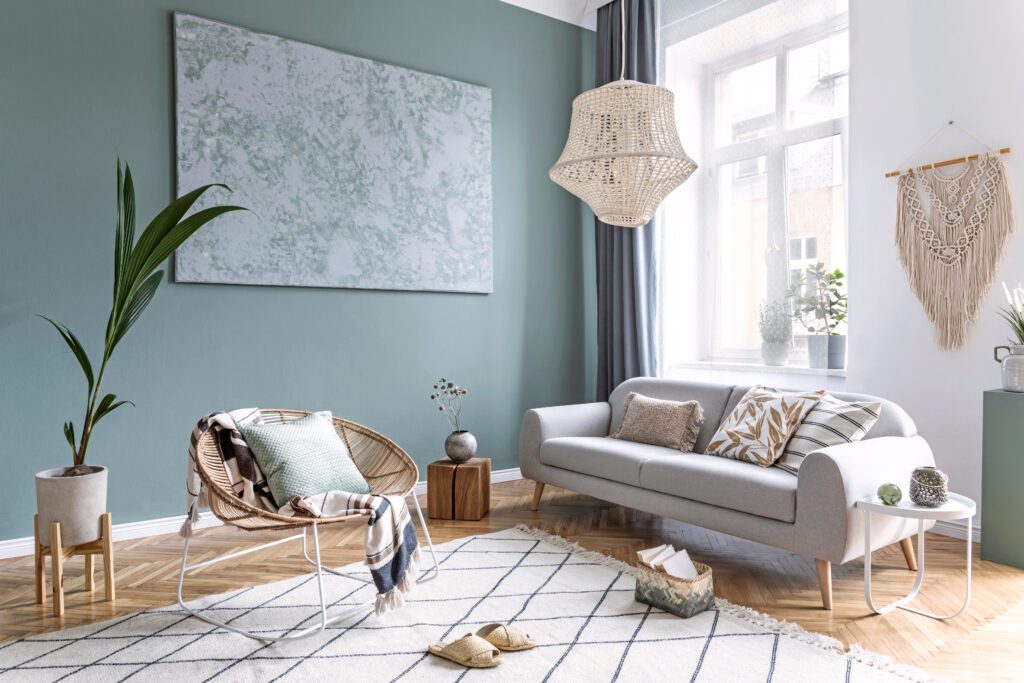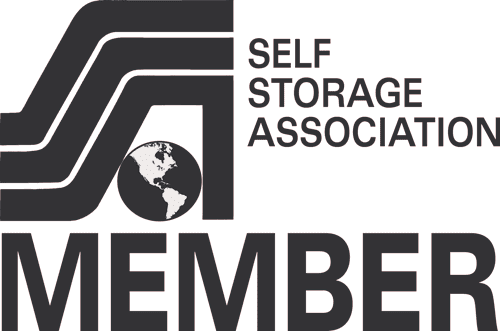Minimalist Living: Simplifying Your Lifestyle with Self-Storage Solutions
Simplifying Your Lifestyle with Self-Storage Solutions
1. Embrace Intentional Decluttering
At the core of minimalist living is intentional decluttering, the process of consciously evaluating and reducing possessions to create a more streamlined and harmonious living space. Start by taking inventory of your belongings and assessing their value, usefulness, and emotional significance. Ask yourself whether each item serves a purpose or brings you joy, and consider whether you could live without it or find a more meaningful use for it.
When decluttering, focus on one area or category of belongings at a time, such as clothing, books, or kitchenware, and sort items into categories such as keep, donate, sell, or discard. Be honest with yourself about which items truly add value to your life and which ones are simply taking up space or causing unnecessary stress. Keep in mind that decluttering is a gradual process and may require multiple rounds of sorting and purging to achieve your desired level of simplicity.
As you declutter, be mindful of your storage options and consider the space constraints of your living environment. Identify items you’ll be keeping but don’t need immediate access to and consider storing them in self-storage to free up space and reduce visual clutter in your home. Choose a storage property that offers convenient access hours, security features, and climate-controlled units to protect your belongings while they’re in storage.
To enhance your decluttering process, try employing popular methods like the KonMari method, which emphasizes keeping only items that “spark joy.” This can provide a structured approach to decluttering and make the process less overwhelming. Additionally, consider documenting the decluttering journey through before-and-after photos to visualize your progress and stay motivated.
2. Optimize Storage Solutions
Maximizing storage space is essential for minimalist living, as it allows you to keep your living environment tidy and organized while still retaining the belongings that add value to your life. Evaluate your current storage options and identify areas where you can optimize space and improve organization. Look for unused or underutilized spaces such as under beds, behind doors, or inside closets, and invest in storage solutions that make the most of these areas.
Consider using multi-functional furniture pieces such as storage ottomans, bed frames with built-in drawers, or wall-mounted shelving units to maximize vertical space and keep belongings organized. Choose furniture with clean lines and minimalistic designs to complement your minimalist aesthetic and create a cohesive look throughout your living space.
When organizing belongings, group similar items together by category and store them in designated containers or bins to keep them organized and easily accessible. Use labels or clear storage containers to identify the contents of each container and make it easier to locate specific items when needed. Consider investing in storage solutions such as modular shelving units, stackable bins, or hanging organizers to customize storage options to fit your space and needs.
In addition to physical storage solutions, consider digital tools to help maintain organization. Apps like inventory management systems can help you keep track of what you own and where it’s stored, reducing the likelihood of duplicate purchases and helping you stay organized in the long term.
3. Utilize Self-Storage for Seasonal Items
Seasonal items such as holiday decorations, seasonal clothing, and recreational gear can take up valuable space in your home, especially if you live in a small or minimalist living space. Utilizing self-storage for seasonal items allows you to keep these belongings safely stored away until they’re needed, freeing up space in your home and reducing visual clutter.
Before storing seasonal items in self-storage, take inventory of your belongings and assess your storage needs. Choose a storage unit size that accommodates your seasonal items comfortably, leaving room for additional items or future acquisitions. Consider factors such as climate control, security features, and accessibility when selecting a storage property to ensure the safety and condition of your belongings while they’re in storage.
When storing seasonal items in self-storage, pack them securely in sturdy containers or bins and label them clearly with their contents. Use shelves, pallets, or stacking bins to maximize vertical space and keep items organized and easily accessible. Invest in insurance coverage for added peace of mind in case of theft, damage, or loss.
To maximize the efficiency of your storage unit, create a detailed inventory list and map out the placement of items within the unit. This will save you time and hassle when retrieving items. Additionally, consider rotating seasonal items in and out of storage based on the time of year to maintain a streamlined living space throughout all seasons.
4. Create Digital Storage Solutions
In addition to physical belongings, digital clutter can also accumulate and contribute to feelings of overwhelm and disorganization in minimalist living spaces. Create digital storage solutions to manage and organize digital files such as photos, documents, and media libraries, reducing digital clutter and streamlining your digital life.
Start by organizing digital files into categories such as work, personal, and recreational, and create a folder structure that makes it easy to locate specific files when needed. Use descriptive file names and tags to label files and make them easily searchable, and consider using cloud storage services or external hard drives to back up and store important files securely.
Automate file organization and storage with software tools and apps that automatically categorize and sort files based on predefined criteria. Set up regular backups and syncs to ensure your digital files are securely stored and accessible across multiple devices, reducing the risk of data loss or corruption.
In addition to organizing files, consider decluttering your digital life by unsubscribing from unnecessary email lists, deleting unused apps, and regularly clearing your browser history and cache. This not only frees up digital storage space but also contributes to a sense of digital well-being.
5. Practice Mindful Consumption
At the heart of minimalist living is the practice of mindful consumption, which involves being intentional and deliberate about the items you bring into your life and the impact they have on your well-being and the environment. Before making a purchase, consider whether the item aligns with your values, serves a purpose, and brings you joy, or if it’s simply a fleeting impulse or societal pressure.
When considering new purchases, ask yourself whether the item adds value to your life and contributes to your goals and priorities, or if it’s likely to become clutter or cause unnecessary stress. Consider alternatives such as borrowing, renting, or repurposing items when possible to reduce consumption and minimize waste.
If you find yourself accumulating items that no longer serve a purpose or bring you joy, practice letting go and releasing attachments to material possessions. Donate or sell items that are in good condition but no longer needed, and recycle or responsibly dispose of items that are no longer usable. By consciously curating your belongings and practicing mindful consumption, you can create a more intentional and fulfilling minimalist lifestyle.
In addition to personal mindfulness, consider the environmental impact of your consumption habits. Opt for sustainable and eco-friendly products whenever possible and support businesses that prioritize ethical and responsible practices. By aligning your consumption habits with your values, you contribute to a more sustainable and intentional way of living.
6. Integrate Self-Storage Solutions with Minimalist Design
Integrating self-storage solutions into your minimalist design can enhance the functionality and aesthetics of your living space. Choose storage solutions that blend seamlessly with your interior design, such as sleek, modern storage units or built-in cabinetry that maintains the clean lines and simplicity of a minimalist aesthetic.
Consider custom-built storage solutions tailored to your specific needs and space constraints. Custom storage can maximize every inch of available space while maintaining a cohesive look. For example, built-in shelves, hidden compartments, and furniture with integrated storage can provide ample space for your belongings without disrupting the minimalist design.
Furthermore, use self-storage units for items that you rotate seasonally or use infrequently. This allows you to maintain a clutter-free home while ensuring that you have access to all the items you need throughout the year. Self-storage units can also be an extension of your home’s storage, providing a safe and organized space for your belongings.
7. Foster a Minimalist Mindset
Finally, fostering a minimalist mindset is crucial for maintaining a minimalist lifestyle. This involves regularly reassessing your possessions, habits, and lifestyle choices to ensure they align with your minimalist values. Practicing gratitude and contentment with what you have can reduce the desire for unnecessary acquisitions and help maintain a clutter-free living space.
Engage in regular self-reflection to identify areas where you can further simplify and streamline your life. This could involve decluttering physical spaces, reducing digital clutter, or minimizing commitments and obligations. By continuously aligning your lifestyle with minimalist principles, you can create a more intentional and fulfilling life.
Additionally, connect with like-minded individuals or communities that share your minimalist values. Engaging with a supportive community can provide inspiration, motivation, and practical tips for maintaining a minimalist lifestyle. Sharing your journey with others can also reinforce your commitment to minimalism and provide a sense of accountability.





